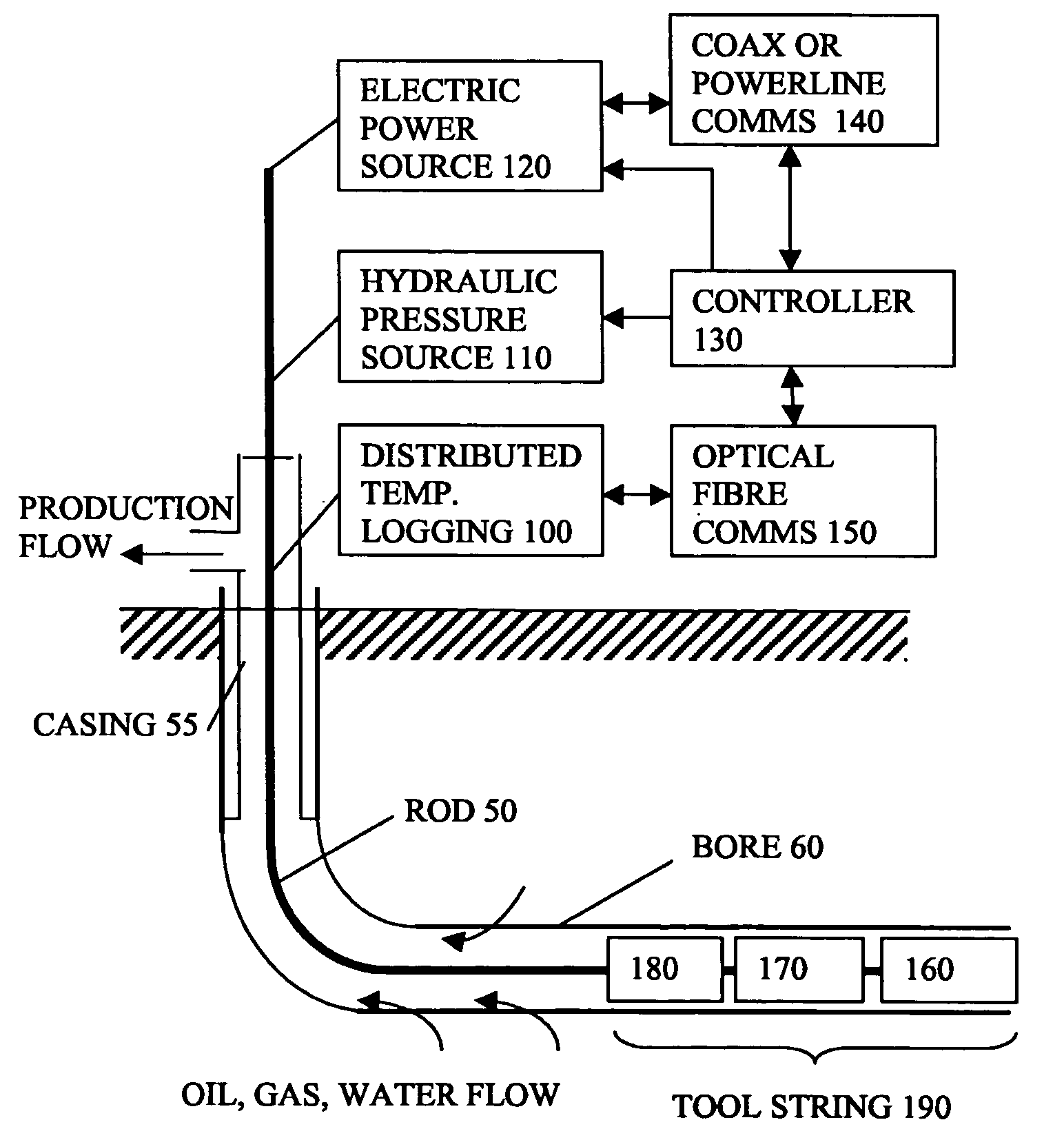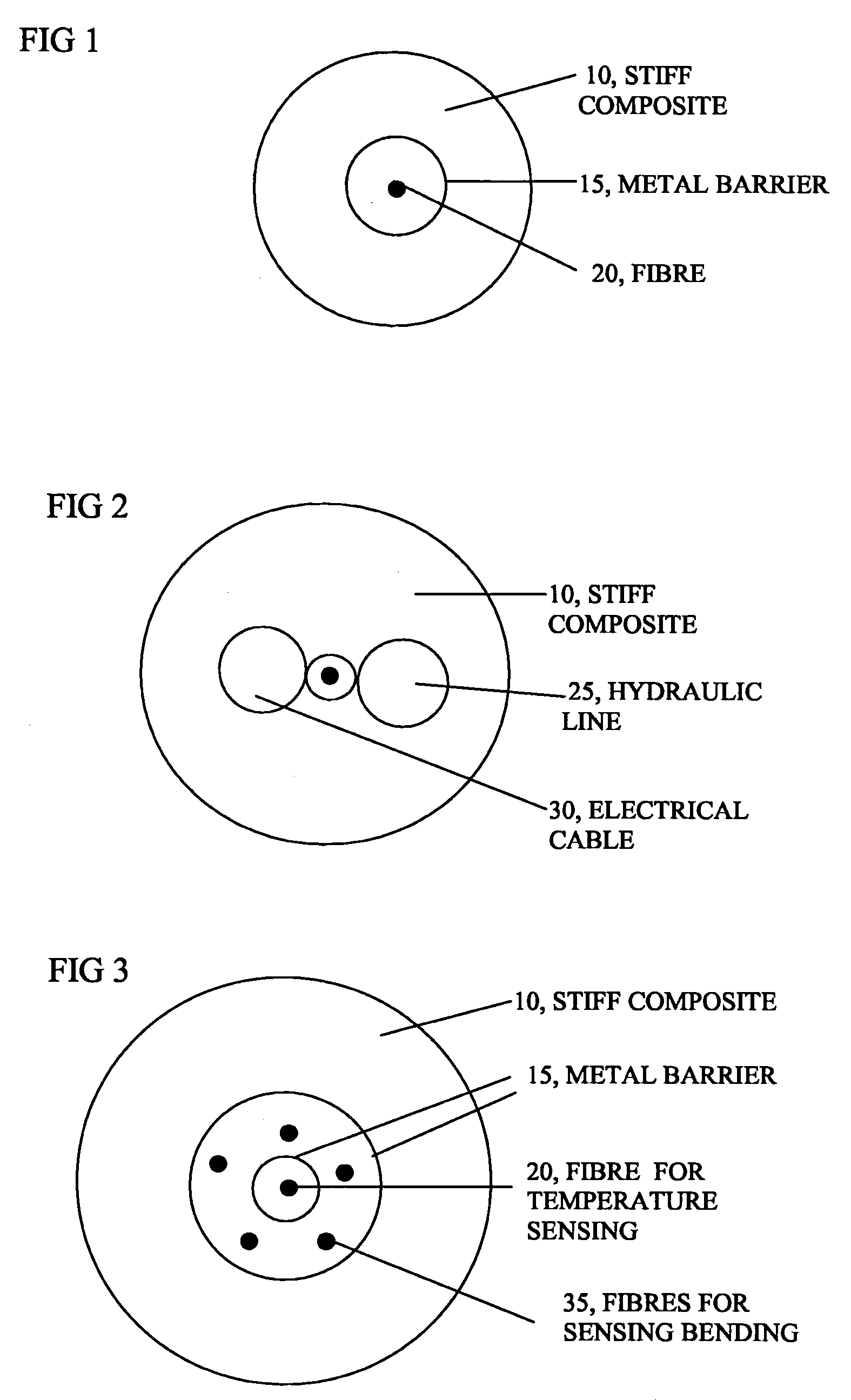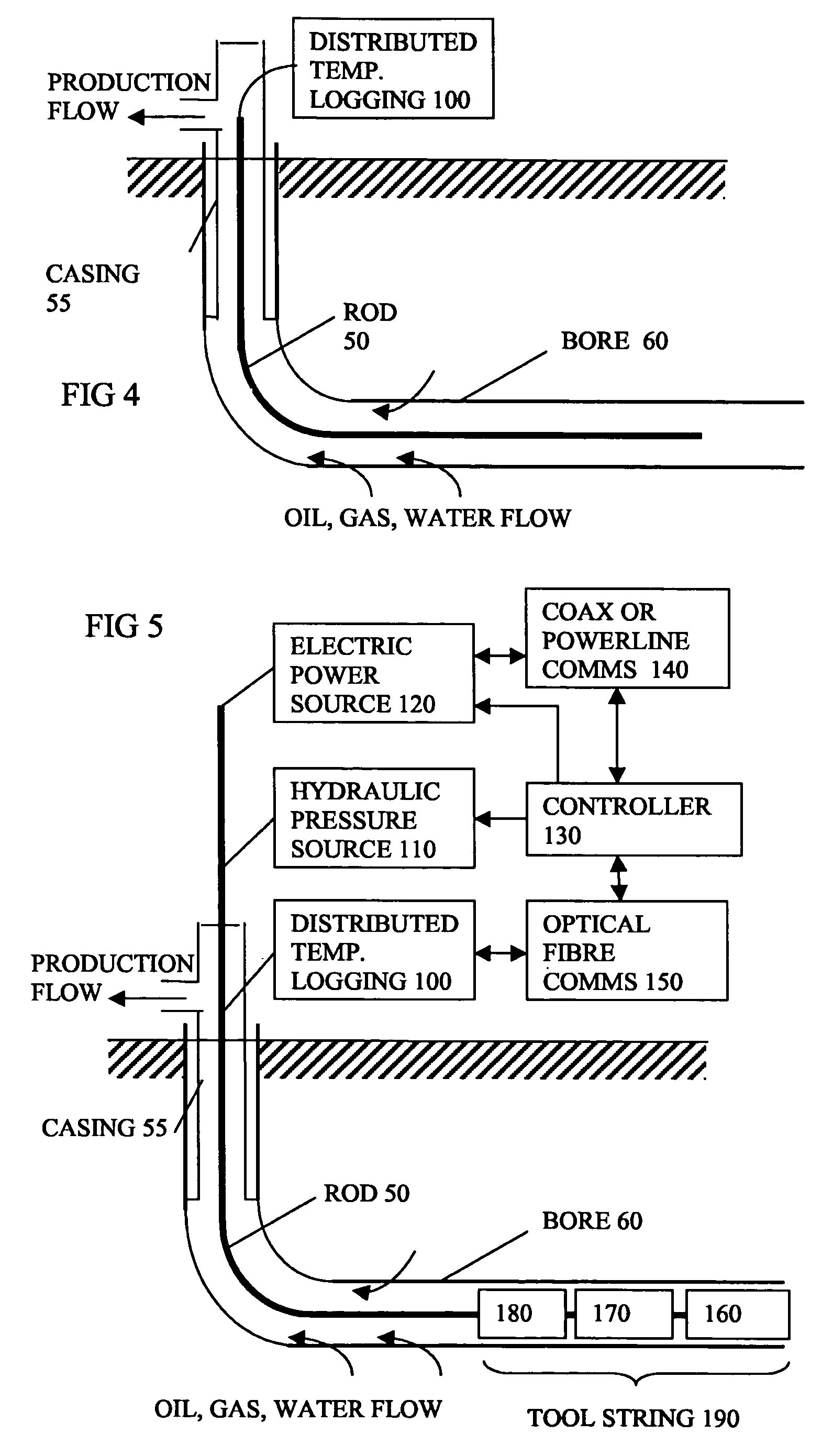Intervention rod
a technology of intervention rods and rods, which is applied in the direction of drilling pipes, wellbore/well accessories, sealing/packing, etc., can solve the problems of buckling, more difficult and costly to add sensing fibres, and more difficult and expensive to deploy sensing fibres
- Summary
- Abstract
- Description
- Claims
- Application Information
AI Technical Summary
Benefits of technology
Problems solved by technology
Method used
Image
Examples
Embodiment Construction
[0048]The embodiments described relate to performing a distributed temperature logging or other actions in a conduit such as a wellbore by inserting / pushing a stiff spooled intervention rod, for example manufactured of a composite or a hard plastic material, into the wellbore from one end. Clearly the aspects of the invention can be applied or implemented in other ways. In cases where the wellbore contains elevated pressure, a sealing system against the intervention rod must be used to prevent wellbore fluid leakages to the environment. As the intervention rod is manufactured to be straight and stiff, the rod can be pushed into the conduit without risk of buckling and jamming in the conduit, or for longer distances before friction between the rod and the conduit becomes too great.
[0049]The intervention rod can be pushed from surface, using an injector system constructed with feeding wheels, chain drive, or similar, and it can be pushed to a desired distance. This distance can be as ...
PUM
| Property | Measurement | Unit |
|---|---|---|
| diameter | aaaaa | aaaaa |
| diameter | aaaaa | aaaaa |
| angle | aaaaa | aaaaa |
Abstract
Description
Claims
Application Information
 Login to View More
Login to View More - R&D
- Intellectual Property
- Life Sciences
- Materials
- Tech Scout
- Unparalleled Data Quality
- Higher Quality Content
- 60% Fewer Hallucinations
Browse by: Latest US Patents, China's latest patents, Technical Efficacy Thesaurus, Application Domain, Technology Topic, Popular Technical Reports.
© 2025 PatSnap. All rights reserved.Legal|Privacy policy|Modern Slavery Act Transparency Statement|Sitemap|About US| Contact US: help@patsnap.com



